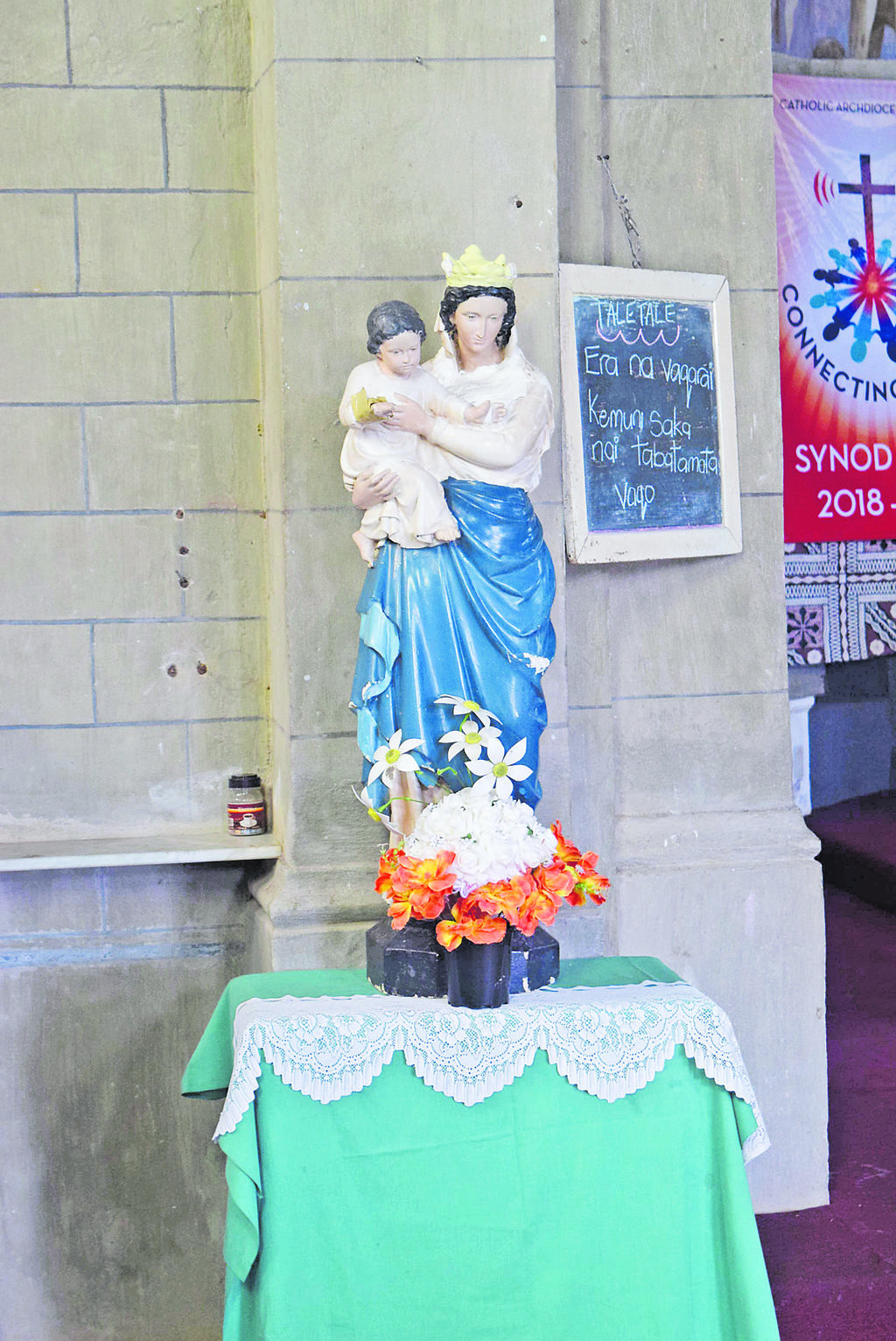This week we re-look at one of John Kamea’s stories about the Church of the Black Christ in Ra. This article was published in The Fiji Times on March 10, 2019.
RENCH born American artist, Jean Charlot’s paining of the “Black Christ and Worshippers” mural inside the Church of the Black Christ (also known as St Francis Xavier Church) in Navunibitu, Naiserelagi in Ra is a work of wonder.
Research suggests the Navunibitu paintings are the western most frescoes of the 20th century and the only monumental public art done by Charlot in the South Pacific.
Painted between 1962 and 1963, they are also the only major treatment of Melanesians or Polynesians by any American artist in the twentieth century.
Literature contends the Black Christ mural was commissioned by Austrian priest and missionary, Father Franz Mathias Wasner, who was the chaplain and musical director of the Trapp Family Singers, a world famous group whose life story inspired the Rodgers & Hammerstein Broadway production starring Mary Marti and one of the world’s most famous movie musicals, The Sound of Music, starring Julie Andrews.
Put simply, the mural, which many locals have not ever seen or heard of, brought together two world famous people to 1962 Fiji, eight years before the end of British colonial rule. Over the years it has attracted tourists from all over the world who travel to Rakiraki to see the peculiar church painting.
After studying in Rome, Italy, Fr Wasner met Georg von Trapp, the family patriarch of the original Trapp Family Singers in Austria and the two became close friends. Fr Wasner suggested to George to try out earning a living by singing and in 1938 escaped Hitler with the Trapp family after the Nazi occupation of Austria.
In the US, Fr Wasner toured with the Trapp Family Singers from 1940 until 1955 before deciding to do missionary work in Fiji until 1966.
It was during his stay in Fiji in the 1960s that he commissioned the murals of Navunibitu catholic mission in Naiserelagi, Ra.
“Basically Fr Wasner was friends with Charlot and when posted at the church in Ra asked him to paint a fresco to ‘make it easier for him to pray’. So the fresco is simply a gift from Jean Charlot to Fr Wasner and the church there,” said Barbara Pirie, 77, of Lautoka.
“The drawing of the main fresco evolved out of Jean’s deep faith and the people who were there to act as models and tied to the Fiji environment and culture that both Jean and Zohmah fell in love with and felt special about Fiji because of their time in Ra until they died.”
During the Charlots’ visit to Fiji, The Fiji Times of October 2, 1962 said Jean’s wife, Zohmah likened his mural works to “watching somebody working on a jigsaw puzzle”.
Another article published in The Fiji Times in December 17, 1962 quoted Fr Wasner describing the project as “telling a story of today and the hope of a happy future and creating a memory which will remain for a long time”.
He said the association of “Fijian and Indian people shows that Christ called all people and all races of the world together”.
Historical accounts suggest the Charlots’ experience during the short time they spent in Ra and their interactions with people earned them lasting impressions of pre-independence Fiji.
According to Dr Caroline Klarr, who wrote a thesis on Charlot’s Navunibitu mission painting, titled Painting Paradise for a Post-Colonial Pacific: The Fijian Frescoes of Jean Charlot, the Charlots made personal contact with Fijians when they returned to Hawaii.
They opened their homes to the Fijians, often hosting parties with lovo, Fijian earth ovens used to prepare traditional Fijian foods, music, dance and even yaqona drinking.
One of those whom the Charlots got acquainted with and befriended was Barbara and her husband John Pirie.
The Piries were friends with Jean and Zohmah Charlot since 1963 and even had their wedding reception at the Charlots’ home in Honolulu, Hawaii.
John was studying at University of Hawaii after being offered an east-west centre study grant when he and Barbara met Zohmah and Jean Charlot who was a university Professor of Arts.
“Because the Charlots fell so in love with Fiji, every time they had a Fiji visitor we were invited, along with a few other Fijians, to cook a Fijian feast so we were often at their house and heard a lot about their time in Fiji. We stayed in touch with them and visited whenever in Honolulu,” Barbara said.
“In 1963 they were still ‘full’ of their stories and love for Fiji so we heard a lot about their time there (Ra). I remember that Zohmah loved ‘vakasoso’ the best for desert.”
Is the Black Christ mural and others at Navunibitu worth conserving as a historic artefact?
According to Dr Klarr it is!
She said the painting of the Fijian Black Christ articulated post-colonial values and transcended time, ethnic, and religious boundaries, extending even into the realms of national society.
“In Fiji, as in Hawaii, Charlot’s murals implicitly empowered Pacific Islanders through his monumental public images. He depicted local peoples within their cultural contexts and represented them as equals, not only in the eyes of God, but also in the eyes of the colonialists who dominated them,” Dr Klarr argued.
“As a colonized nation, Fiji’s future in the 1960s depended on indigenous representation and self-determination. Charlot’s Black Christ, with its native savior as the head of the Church, symbolized Fijian leadership and, by extension, sovereignty.”
Commenting on the mural, Barbara described it as being “localized and simplified “in that only two cultures were presented and the design showed them on different sides rather than mixed on each side.
“Artistically, these works matches the political and social rhetoric of the time. Also Jean had very little time to put the design together and he drew on his artistic history while adding all the new cultural and environmental elements that he encountered in his short time here,” Barbara said.
“This reflects the strength of these different cultures and how they are shared for a common purpose and fits into the need for people to retain their own culture and beliefs while being flexible and open to all that is around them.”
The Charlots were very open to all differences they encountered including how they all reflected respect and worked together in the community.
When they returned to Hawaii, Zohmah published six articles on their Fiji experience based primarily on letters written to family members.
Two of her most outstanding articles written in 1964 were “Charlot Paints a Fresco in Fiji” and “The Place of Heavenly Song”.
In a letter outlining her Fiji experience, Zohmah said “it is good to be in this place, where the day begins for all the world, and where the children begin the day with prayers and song”
In another letter she described her thanksgiving feast in Fiji as one without turkey trimmings but with lots of “local fish, shrimp, pineapples, bananas, rice and taro”.
In February 2016, Cyclone Winston, dubbed the strongest southern hemisphere storm in recorded history, as well as the deadliest cyclone in Fijian history made a landfall with estimated winds of up to 180 mph.
The cyclone ripped off parts of the St Francis Xavier church’s roof and destroyed all of the windows and doors, putting Charlot’s murals at great risk.
Although the murals are regarded as “buon fresco” or “true fresco,” because they were painted on wet plaster, which is a relatively durable medium, they are nevertheless in danger, especially in the future as climate change effects take their toll in the Pacific and in Fiji.
The Hawaii-based Jean Charlot Foundation which aims to perpetuate the legacy of Jean Charlot by supporting the collection, preservation, documentation and disseminations of resources related to his life, work and interests believes the Fijian murals at Naiserelagi need conserving.
Barbara, who has lot of background material on the Church of the Black Christ fresco in her possession, including an article by Zohmah titled ‘Charlot Paints a Fresco in Fiji (May 1964), said her materials needed archiving.
Barbara also has the ‘Death and Burial of Jean Charlot’ by his eldest son John and a beautiful self-portrait of Jean.
“I am now 77 and live in Lautoka and would like to find a home for the materials I have. ”
The Church of the Black Christ was opened in 1917 by a Bishop Vidal and remains a tourist attraction for the district of Rakiraki.
History being the subject it is, a group’s version of events may not be the same as that held by another group. When publishing one account, it is not our intention to cause division or to disrespect other oral traditions. Those with a different version can contact us so we can publish your account of history too — Editor.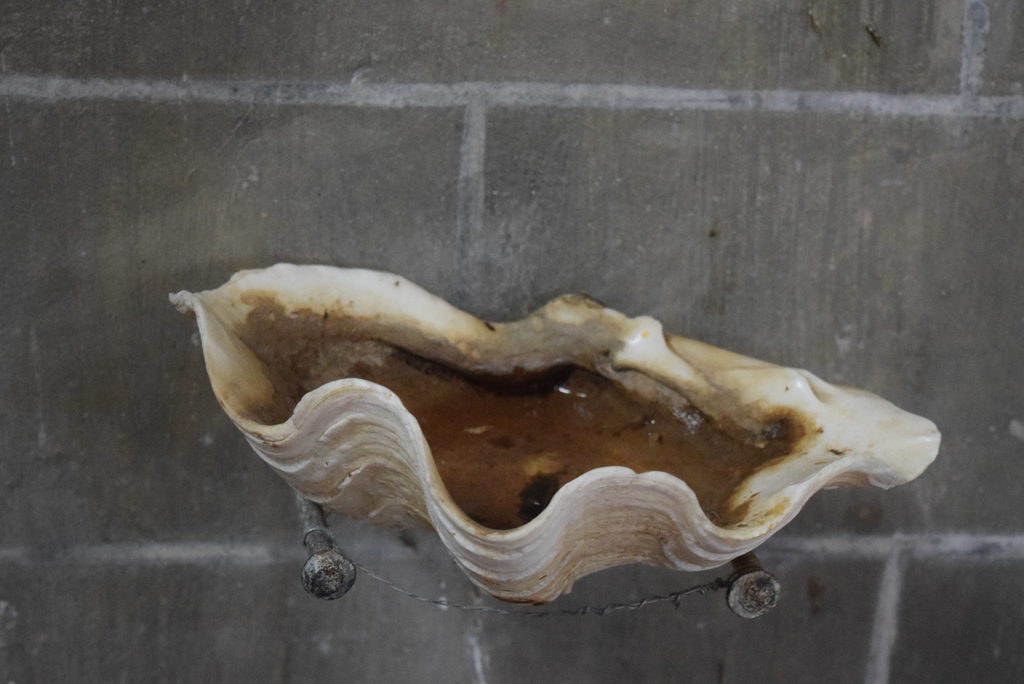
A clam shell used as a water font inside the Church of the Black Christ. Picture: JOHN KAMEA

Network of wooden beams on the roof. Picture: JOHN KAMEA
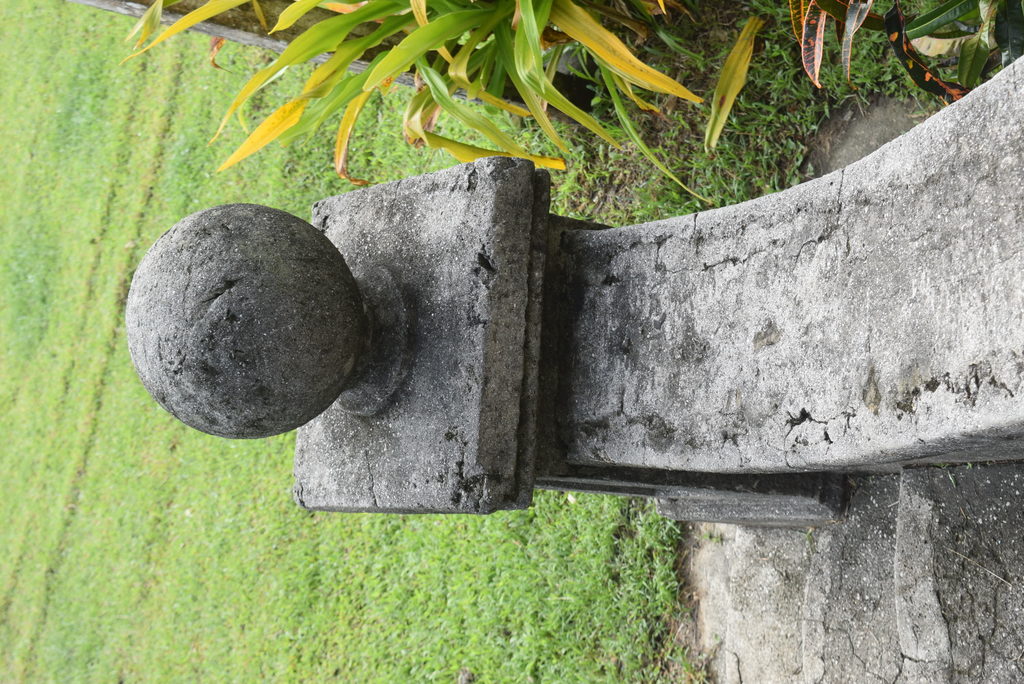
Concrete church handrail. Picture: JOHN KAMEA
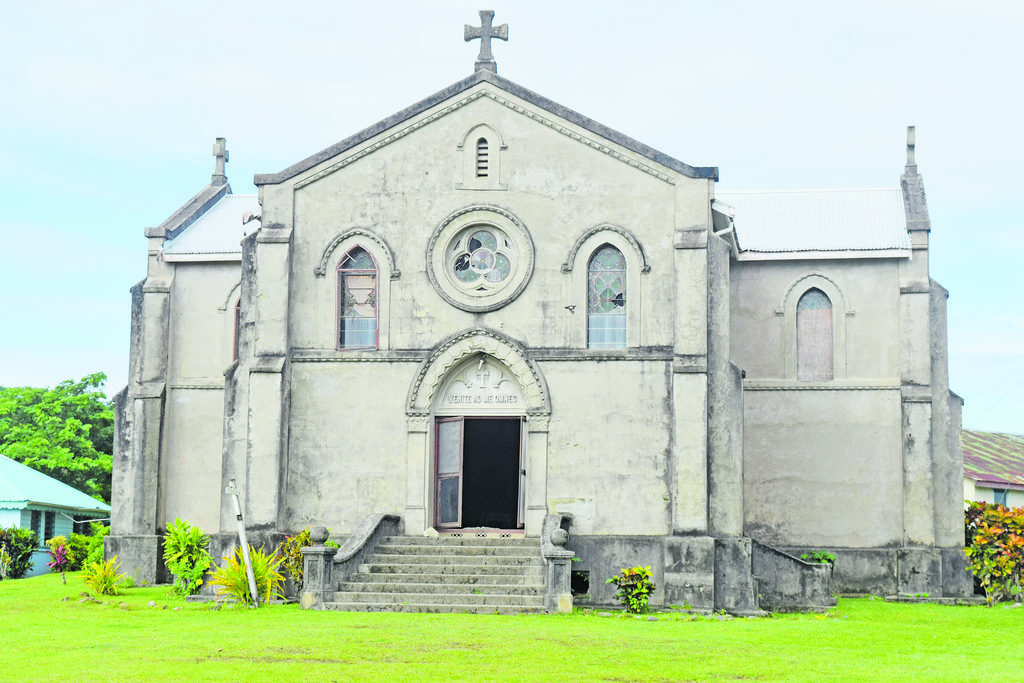
The Church of the Black Christ at Navunibituy, Nasereilagi in Ra. Picture: JOHN KAMEA
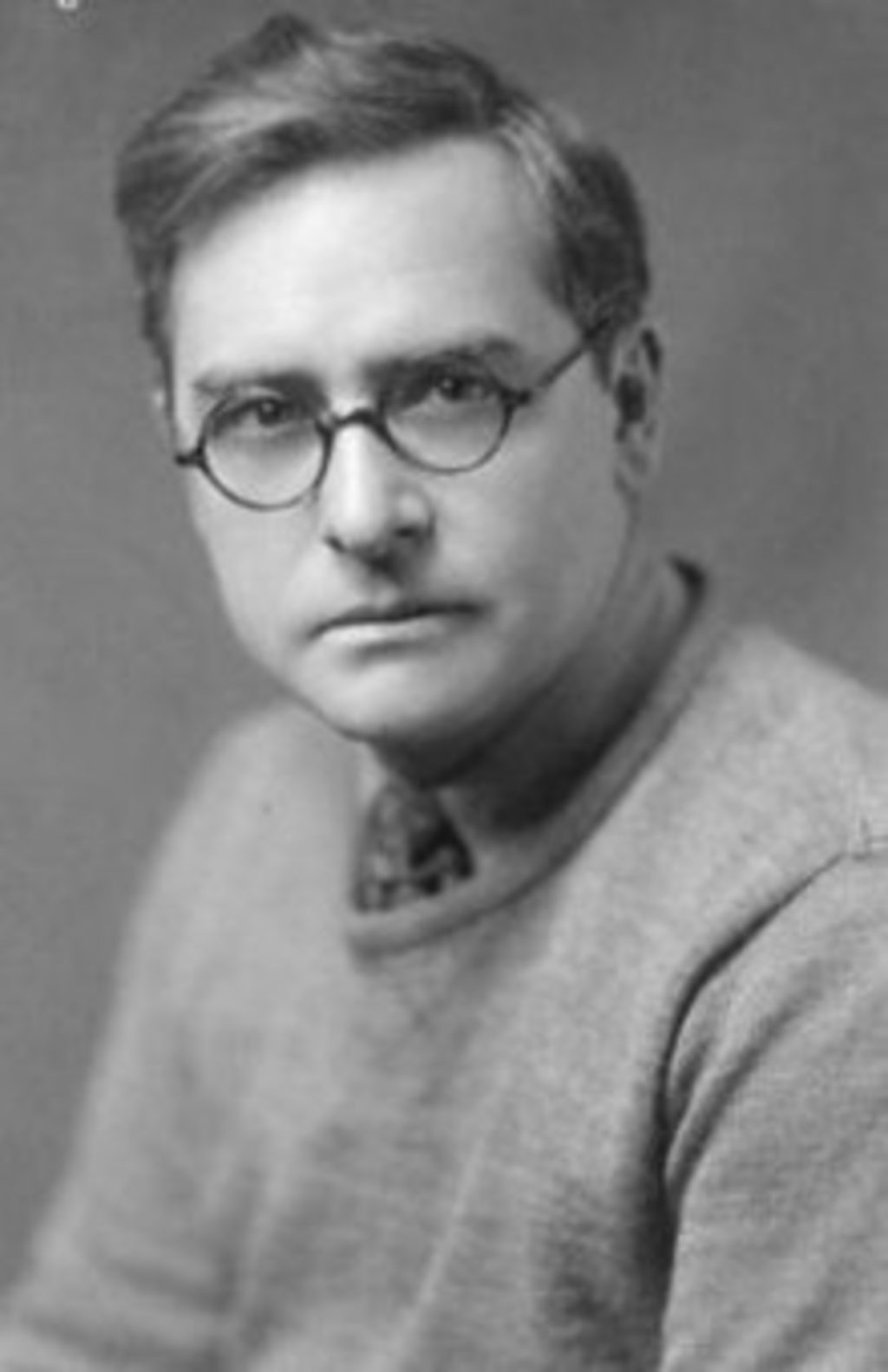
Church of the Black Christ mural painter, Jean Charlot. Picture: EN.WIKIPEDIA.ORG
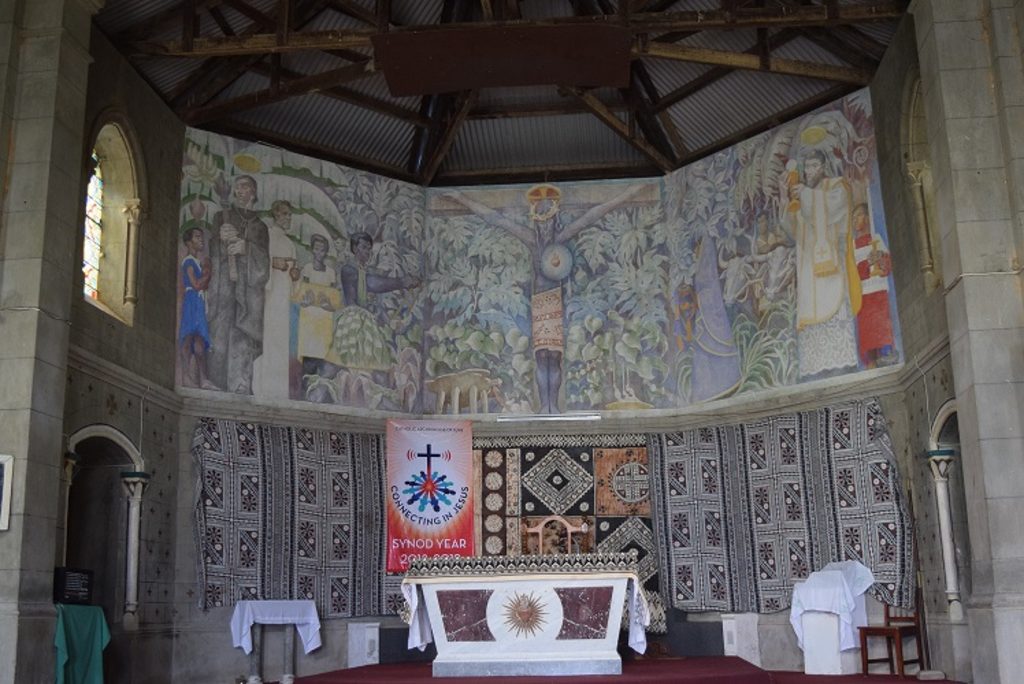
The main mural inside the Church of the Black Christ, feature a crucified ‘Fijian’ Christ draped in tapa and surrounded by locals. Picture: FILE

